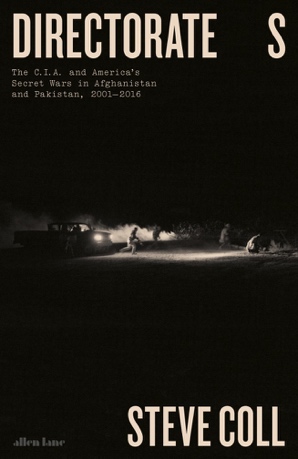The title of this book does not do its significant contents justice. Directorate S is the section of the Pakistan Inter-Services Intelligence agency that is responsible for covert operations. Coll argues that Directorate S is ‘the heart of the problem’ in Afghanistan.

This book follows on from Coll’s earlier Pulitzer prize-winning book, Ghost Wars (Penguin, 2004), which examined the war in Afghanistan from the Soviet invasion in 1979 and the evolution of al-Qaeda up to 10 September 2001. The current book looks at the war in Afghanistan since the al-Qaeda attacks on the United States on 11 September 2001 (‘September 11’). Initially, it focuses on the efforts of the United States Central Intelligence Agency (C.I.A.), but its scope expands as the narrative develops in a roughly chronological fashion.
In the wake of the ‘September 11’ attacks, the United States government and the C.I.A. scrambled to work out how to destroy Osama Bin Laden and his associates. The C.I.A. was familiar with Afghanistan, had worked closely there with the Mujahideen to defeat the Soviet Union, and in the 1990s, provided support to the Northern Alliance. A tangle of assumptions, old contacts, favours and animosities were now reactivated. Superficially, the invasion was quick and efficient, but the escape of Bin Laden and much of the Taliban leadership, a catastrophic failure to define the limits of the North Atlantic Treaty Organisation’s mission, and a tough, impoverished country, interacted to create a quagmire which lasts to this day.
At the heart of the problem, Coll believes, lay ‘Directorate S’, a highly secretive arm of the Pakistani state which had its own views on the Taliban and Afghanistan’s place in a wider competition for influence between Pakistan, India and China, and which assumed that the United States and its allies would soon be leaving.
Coll has produced a detailed, coherent account of the machinations in and around Afghanistan during the period covered. He knows his subject and has told the story in an insightful and critical way. A reader not already familiar with the war, however, may find the vast array of characters difficult to follow.
The title claims to cover the period up to 2016, but is misleading. The narrative only goes to the end of 2014, although a postscript provides an update on where some key personalities were in 2016. Despite covering a tremendous amount of ground over a 13-year period, sadly the war continues and may well require another volume in the years ahead.
Coll is the author of five books. In addition to winning the Pulitzer Prize for Ghost Wars, he also won a Pulitzer Prize in 1990 for explanatory journalism. He covered Afghanistan as the Washington Post’s South Asia bureau chief between 1989 and 1992 and has been the Washington Post’s managing editor since 1998.
The book includes a cast of characters, 21 black-and-white portraits of key personalities, four maps, extensive notes, a bibliography, and a comprehensive index.
Directorate S paints a grim picture of a war that has yet to conclude. It is likely to become a seminal reference for future historians seeking to understand the war. While its length might be a little overwhelming, the background and context it provides would be invaluable for anyone who is going to work in Afghanistan or the region.
Contact Marcus Fielding about this article.






